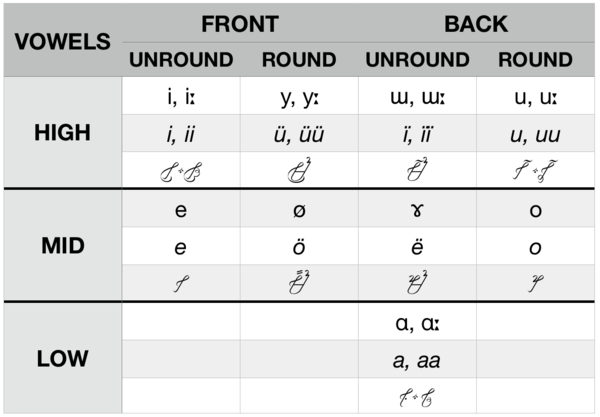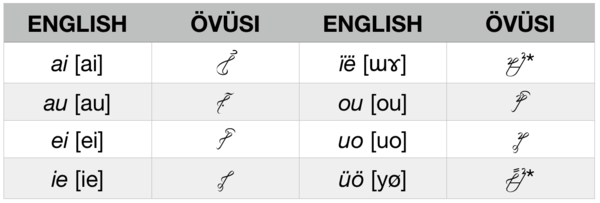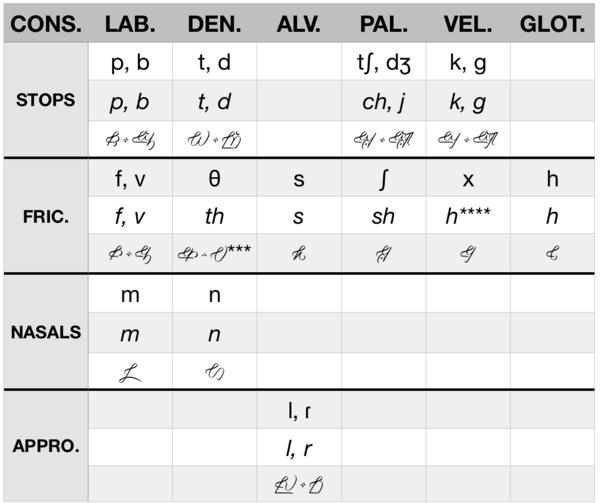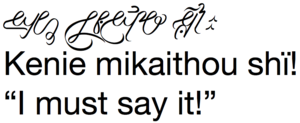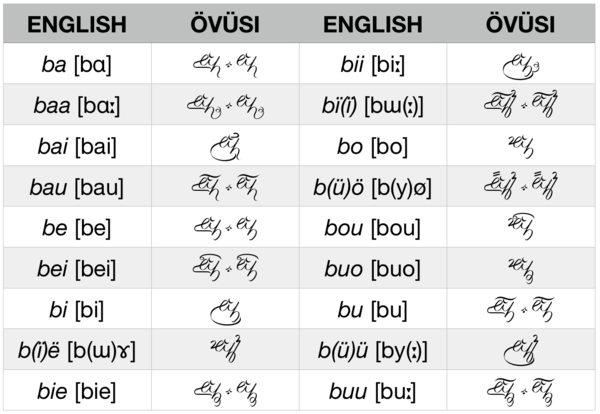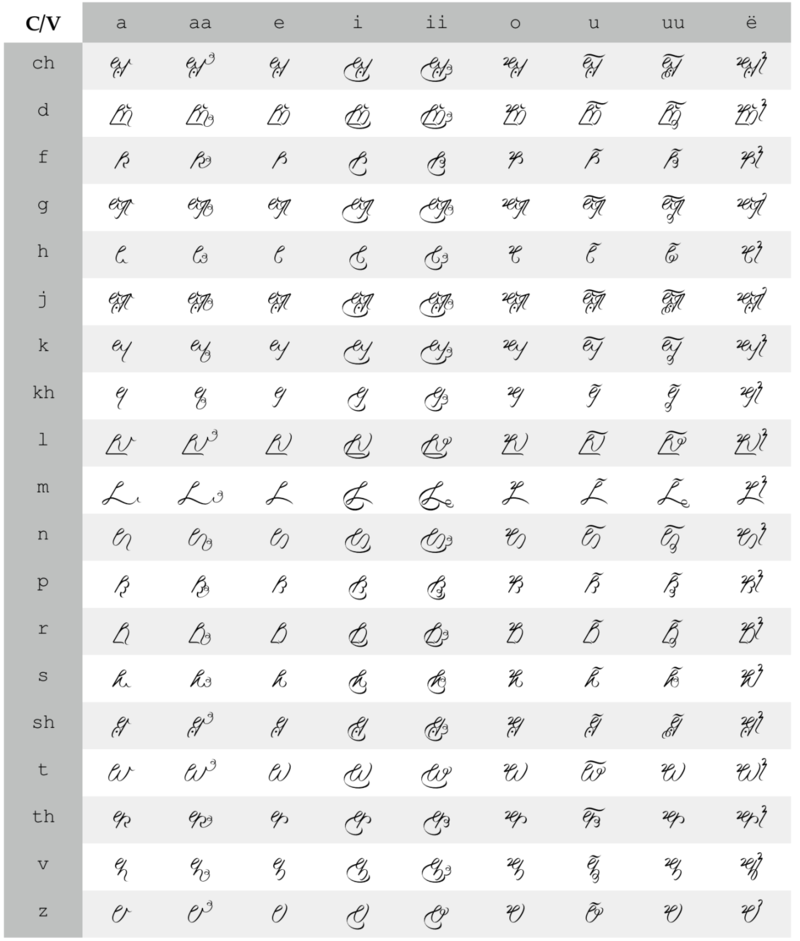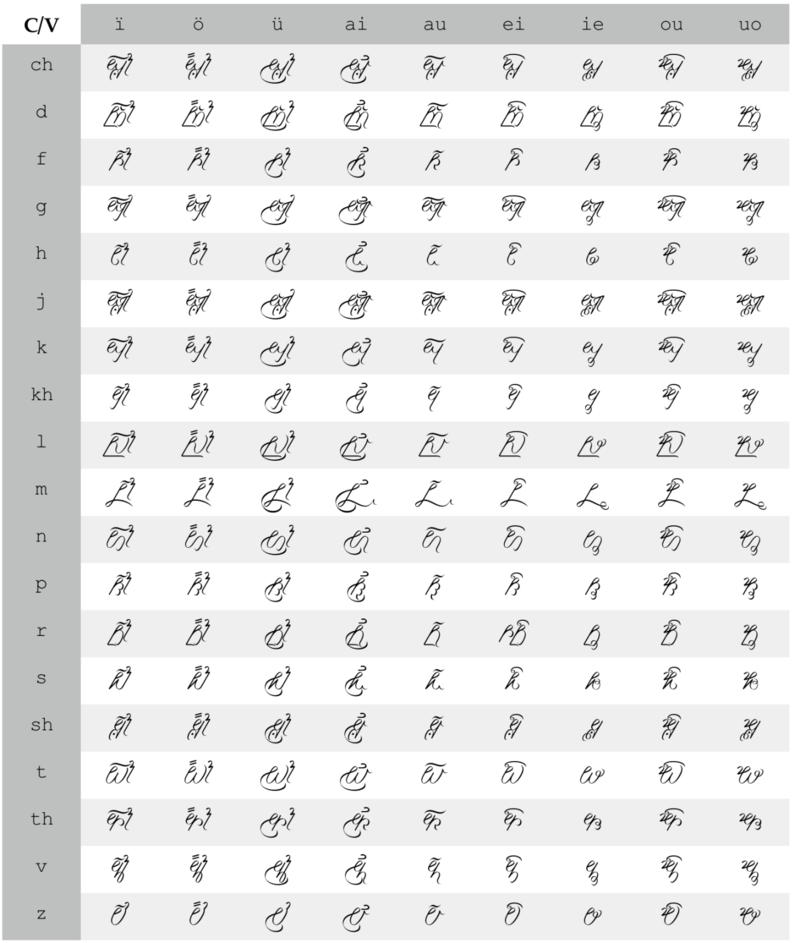Appendix:Övüsi orthography
The Övüsi language from the Netflix film Bright is written using an abugida created by David J. Peterson.
External history
The script used to write Övüsi was intentionally developed by Peterson to be extravagant in style, and thinking he had succeeded in this goal, presented it to the art department of Bright. However, the art department wanted an even more opulent style, and Peterson obliged. The resulting writing system, in Peterson's opinion, while it aligns with the style of the Elves, exhibits moments of sheer absurdity and implausibility. For diphthongs, some of the additional lines and decorative elements were incorporated upon request. For consonants, decorative elements, such as half moons, were added to many characters for the same aesthetic reasons. Extending parts of characters like "r" and "l" was done upon request, along with introducing word-initial flourishes for characters like "f" and "v." While Peterson later considered these additions excessive, they remain part of the script's final form.
Orthography
Övüsi is an abugida, a writing system where glyphs mainly represent consonants, the base consonant form is pronounced with an inherent vowel (in this case, short "e") and modifications are added to the base form for other vowels. "Capital" versions of characters appear as the first character of a word, distinguished by an extra flourish.
Vowels
The phonological system of Övüsi features several distinctive characteristics. Notably, long forms exist for all vowel sounds except mid vowels. Long mid vowels evolved into a sequence of a high vowel followed by a mid vowel, similar to the process observed in the Finnish language, leading to the formation of vowel combinations like "ie," "üö," "ïë," and "uo."
It is worth noting that long opposite-rounding vowels do not have a separate written form in the orthography. While they are phonemic, there is no distinct way to represent them in writing. This contrasts with other elements of the script that have distinguishable forms, such as historical long vowels or diphthongs.
Diphthongs
The Övüsi script also features diphthongs, with some having familiar appearances. For instance, "ie" and "uo" were originally the forms for "ee" and "oo" and are now read differently. In addition, the forms for "üö" and "ïë" are identical to the forms for "ö" and "ë," as there is no means to indicate the long forms of these vowels.
Consonants
The consonants in Övüsi underwent transformations, notably involving short stops becoming fricatives. Notably, the form marked with three asterisks is typically pronounced as [s] before [i] and [θ] elsewhere. This sound is not used word-initially unless preceding [i]. The form marked with four asterisks is an old consonant that is no longer pronounced, having evolved into a regular [h]. As a result, Övüsi contains two characters which represent [h] sounds. They are shown in the table below:
Geminate marker
The script includes a geminate marker, which may be recognized as a reference by Peterson to the Castithan language. This marker is illustrated in the following example:
Synopsis
In the following table, the complete set of vowel modifications are exemplified with the consonant [b] as a base. In cases where two glyphs are shown for a character, the first represents the initial form with the flourish, while the second appears elsewhere within the word:
For the sake of completeness, the fully executed version of each character is presented in two tables below:
